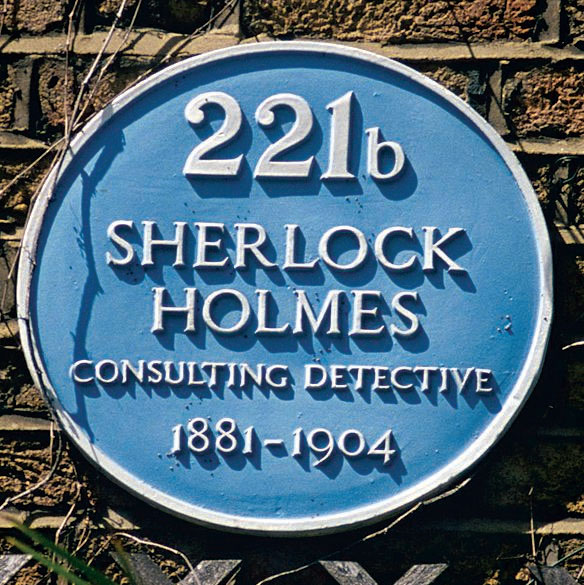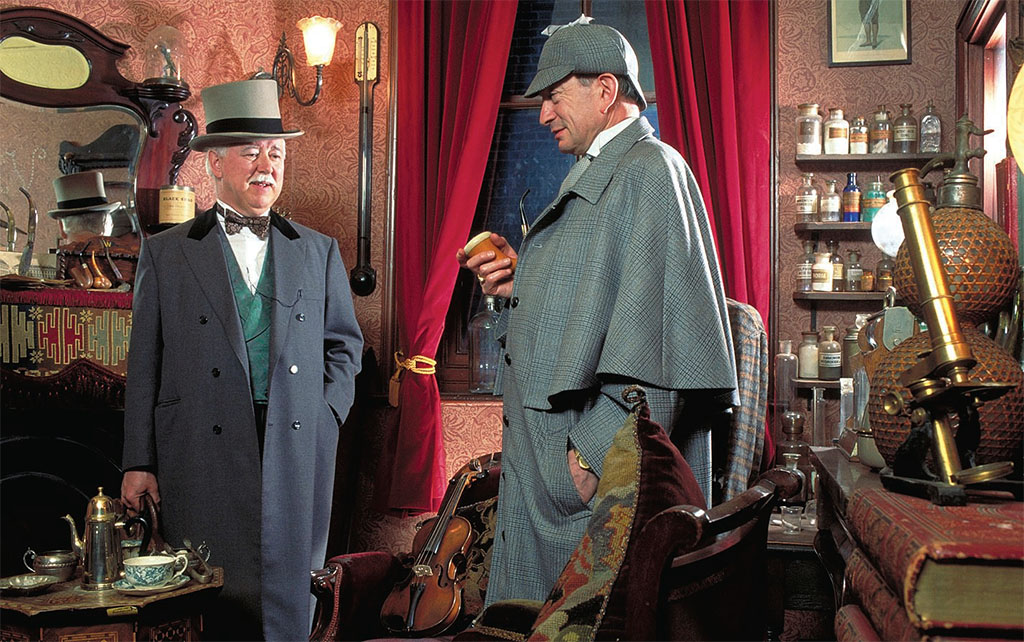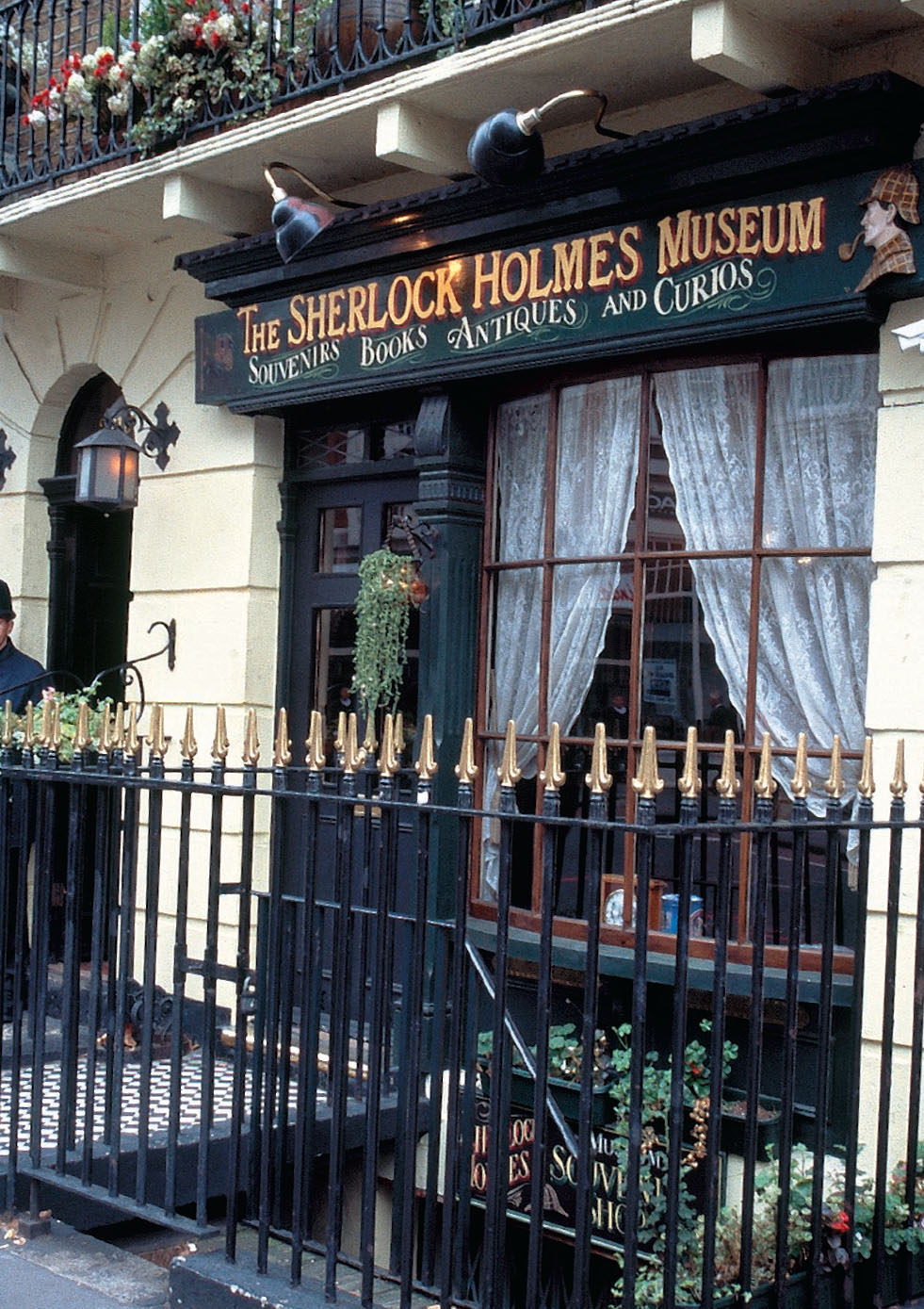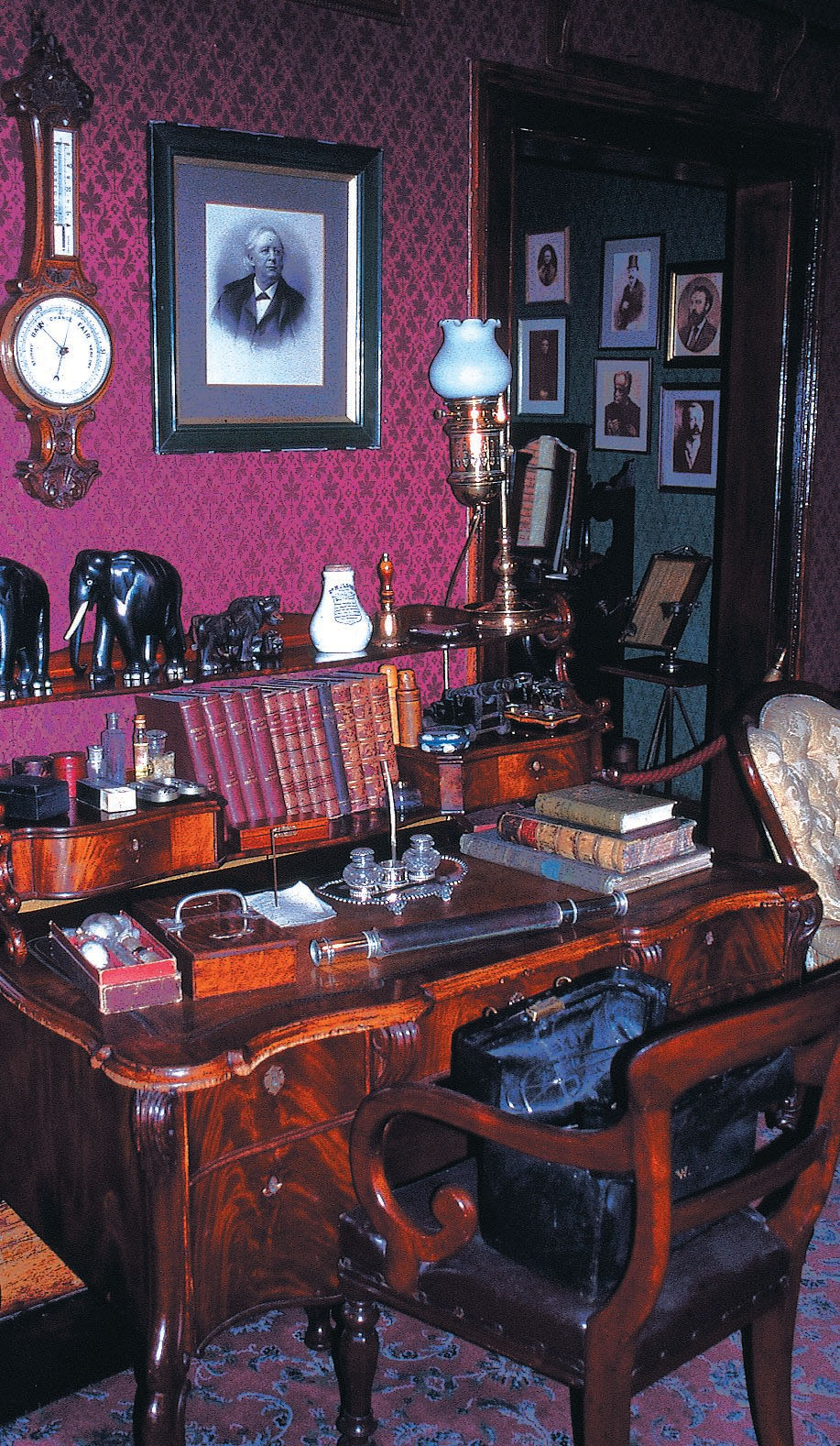
Marylebone and the Sherlock Holmes Museum
[caption id="StreetlightsofLondon_img1" align="aligncenter" width="69"]

ALIGHT AT the Baker Street tube station, a main transit terminal for the London neighborhood of Marylebone (pronounced “Mar-lee-bone”), and a statue of the great detective Sherlock Holmes, perhaps the most famous “resident” of this area, is there to greet you.
[caption id="StreetlightsofLondon_img2" align="alignleft" width="584"]

WWW.BRITAINONVIEW.COM/OLIVIER ROQUES ROGERY
In 1887 Arthur Conan Doyle created the fictional detective and provided him with a street address in Marylebone that today is known around the world. Sherlock Holmes and his pal Dr. Watson resided at the famous address for 23 years, but it was A Study in Scarlet, Conan Doyle’s first book, that set the stage:
We met next day as he had arranged, and inspected the rooms at No. 221B Baker Street. They consisted of a couple of comfortable bedrooms and a single large airy sitting room, cheerfully furnished, and illuminated by two broad windows. So desirable in every way were the apartments and so moderate did the terms seem when divided between us, that the bargain was concluded upon the spot, and we at once entered into possession.
While there really was a Baker Street, there wasn’t a No. 221 or 221B during the years of the Sherlock Holmes stories. In 1930 Baker Street was extended and buildings were renumbered so that 221B became a real address. Today it is the site of the very popular Sherlock Holmes Museum, which was opened to the public on March 27, 1990. The house, built in 1815, will be familiar to fans of Sherlock Holmes and Dr. Watson. Conan Doyle tells readers in his first story that this was a house which took lodgers, and that the landlady Mrs. Hudson lived on the premises.
A blue plaque on the outer wall of the building denotes the fact that Holmes “lived” here from 1881-1904. Enter the house and there on a table is a stack of calling cards indicating that it is the home of Sherlock Holmes, consulting detective. While the ground floor is devoted to a well-stocked gift shop, the upper floors are the heart of the museum. Just as Conan Doyle described in his stories, there are 17 steps leading up to the first-floor study from the ground-floor hallway. The study’s bookshelves contain various medical volumes, a violin and bow lean against the fireplace with its fire heating the room, and pipes are filled and ready for use. Holmes’ deerstalker hat and Watson’s familiar cap hang on hooks in the corner. The detective’s bedroom is also on the first floor, just next to the study, and a slim volume titled The Technics of Violin Playing lies on the night table beside the bed. On the second floor is an exhibition of books and letters about the detective, and a magnificent bronze bust of him sits on a pedestal in a corner. Above, on the third floor, life-size wax figures portray characters from the detective stories.
[caption id="StreetlightsofLondon_img3" align="aligncenter" width="1024"]

WWW.BRITAINONVIEW.COM
Hundreds of books have been written about Sherlock Holmes, and to many he has become a very real person. Letters, Christmas and birthday (January 6) cards arrive every day at the museum and each receives a reply from a staff member. Sir Arthur Conan Doyle wrote 60 Sherlock Holmes adventures—four long novels and 56 short stories. The artifacts and exhibits in the museum are displayed to remind visitors of many of these tales.
While Holmes dominates this part of Marylebone, there is much of interest in this mainly residential neighborhood. Beautiful Regent’s Park is located within the area, as Marylebone’s borders are defined by Great Portland and Oxford Streets and Edgware Road. The district gets its name from a medieval church called St. Mary’s that was built on the bank of a small stream or “bourne” called the Tyburn. Later the church and surrounding neighborhood became known as St. Mary at the Bourne, which over the years was shortened to Marylebone. Today, another church, St. Marylebone Parish Church, built in 1817 and situated on Marylebone Road, is a strong fixture in this community. In 1846 the poets Robert Browning and Elizabeth Barrett were secretly married there after Elizabeth fled from her father’s home in nearby Wimpole Street.
[caption id="StreetlightsofLondon_img4" align="aligncenter" width="981"]

DANA HUNTLEY
In the 16th century, Regent’s Park in the northern half of Marylebone became a royal hunting ground. The present park was designed by master architect John Nash in 1812 and contains the world-famous London Zoo, which opened in 1826. Lord Snowdon, the famous photographer who was once married to Princess Margaret, the sister of Queen Elizabeth II, created the huge tentlike aviary in the zoo that is certainly worth a visit. Queen Mary’s Garden, within the park, is fragrant with roses of every type during the summer months. It is also during this time of year that the Open Air Theatre works its magic with plays by William Shakespeare under a moonlit sky.
About the same time that Regent’s Park became a royal hunting ground, the Portman family purchased most of the land in the southern part of Marylebone and developed many of the streets and squares that are there today. In the mid-19th century, two of Marylebone’s streets, Wimpole and Harley streets, became strongly identified with the medical profession. Londoners still say they have an appointment in Harley Street when they are seeing a doctor. A popular attraction in Marylebone, though not everyone’s cuppa tea, is Madame Tussaud’s Waxworks Museum, and just next door is the London Planetarium.
Charming Marylebone High Street is the heart of the neighborhood with its small shops and cafes. It could be the High Street of any village in England, but here it is the main street of a central London neighborhood. The private Wallace Collection, housed in a townhouse that dominates Manchester Square in this part of London, has one of the best collections of 17th- and 18th-century paintings, porcelain and furniture in the world. Nicolas Poussin’s great painting A Dance to the Music of Time is part of the collection, and its title was used by the writer Anthony Powell (1905-2000) for his series of 12 novels.
Finally, just up the street and on the opposite side of the road from the Sherlock Holmes Museum is the London Transport Property Office. This establishment has been here for many, many decades, and it is where everything left behind on London tubes and buses ends up. While its rooms are stocked with hundreds and hundreds of pairs of lost eyeglasses and black umbrellas, some stranger items are a stuffed eagle, an urn of ashes, dead bats in a container and two human skulls in a bag! Perhaps there are clues here for Sherlock Holmes in his next case.
[caption id="StreetlightsofLondon_img5" align="aligncenter" width="917"]

DANA HUNTLEY





Comments